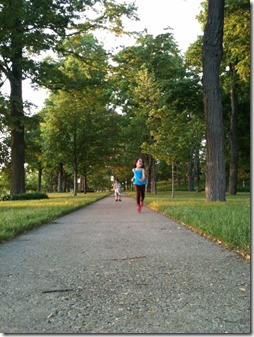Guest Post: Homemade First-Aid
First-Aid may be on your mind since a lot of families spend even more time outside during the summer season. I have a great guest post for you today from + Stu Lieberman. Thanks Stuart!
Read on for these helpful tips…
Sure summer can be the season of fun—pool parties, picnics, family barbecues. But, it’s also the season of bug bites, stings, scrapes, and splinters. When you—or your kids—experience once of the unpleasant side-effects of summer, here are some home remedies to help:
Bug Bites: Have you ever seen pictures of women at a spa with cucumbers over their eyes and wondered what that was about? Well, cucumbers can help reduce puffiness and swelling. If you’ve been bitten by a bug and the area looks a little swollen, try applying a cool cucumber slice to the spot. And, to ease the itching, dab the spot with tea tree oil. This essential oil not only curbs the itching, but also helps to reduce swelling and pain.
Bee Stings: Anyone who is allergic to bee stings or showing signs of an allergic reaction (trouble breathing, feeling faint or dizzy, hives, or a swollen tongue) should get the stinger out and seek medical attention right away. However, if you are not allergic and your symptoms are mild, here are some natural ways to deal with the pain once the stinger has been removed.
Bee venom is acidic so you need to neutralize the acid with something alkalinizing, like baking soda (sodium bicarbonate). Create a paste made with two tablespoons of baking soda with water and apply it to the area. This should help the pain subside. Interestingly, wasp venom is more alkaline, so to neutralize a wasp sting, you want to apply something acidic, like vinegar, instead of baking soda.
To help ensure the stung area doesn’t get infected, coat the area with honey. Honey has natural anti-bacterial properties that can help keep the area clean.
Minor Cuts and Scrapes: With any wound you should first stop the bleeding and clean the area. Once the area is clean, you want to help the area heal. The old belief that you should let cuts and scrapes “breathe” and leave them uncovered is no longer considered the best treatment option. Instead, keeping the area moist and covered has been shown to be a better way to help skin heal. Coat the area with honey and cover it with a bandage. Honey has been shown to speed wound healing, and due to its anti-bacterial properties, can help keep the area from becoming infected.
Splinters: With all the barefoot activities that go on during the summer, it’s no wonder there is a spike in splinters. If you have a splinter that won’t come out with the traditional needle and tweezers, try a mixture of baking soda and water. Mix one tablespoon of baking soda with enough water to make a paste. Make sure the paste is not runny. Apply the paste to the splinter area and cover it with a bandage. Leave the bandage on until the paste dries. When you remove the bandage, the splinter will likely come out with it, or will be sticking out from the skin enough that you can grab it with a pair of tweezers.
If you don’t have baking soda in the house, you can also try to remove the splinter with glue. Spread a layer of glue over the splinter and let it dry. The glue should bind to the wooden splinter so that when you remove the dried glue, the splinter should come out, as well.
Here’s to a fun and healthy summer!
This article is written by + Stu Lieberman the writer for Nutri-Health.com, an online High Quality Supplement and Health Store. Assisting people and helping them find quality natural health supplements and health products online is what Stu has been doing for over 3 years. Nutri-Health.com carries Digestive Supplements to Memory and Mood products.



